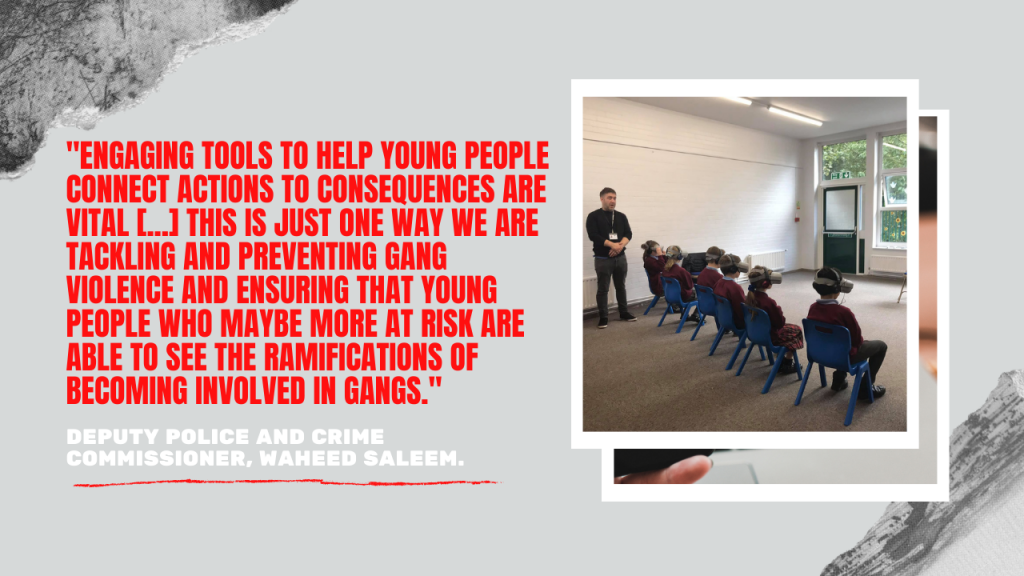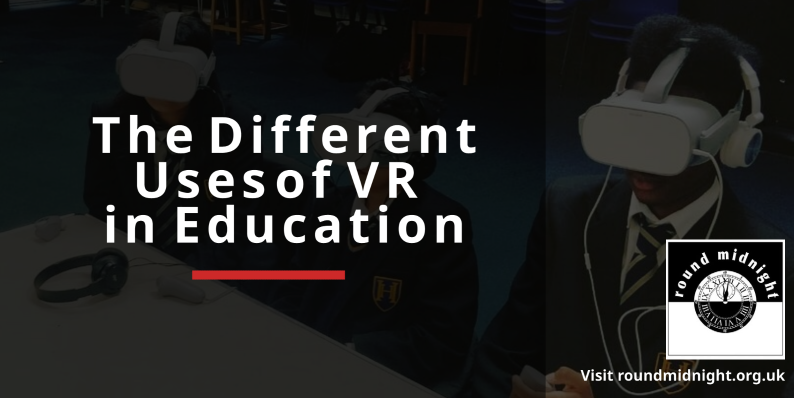There are many different uses of VR in education. In this blog, we explore the different uses, and how our work with VR differs from others.
Does Virtual Reality have a place in education? We certainly think so, and we are not alone in this. VR is increasingly being used across the age groups from primary through to adults. Virtual Reality offers a more immersive experience to pupils than reading a textbook or watching a video clip.
When we reflect upon classroom resources, we must remember the value placed on proving information. It is up to the student to successfully retain the facts they’ve gained from a textbook. And in recent years the role of technology in education to support this fact-based learning has increased. Through the internet, you can rapidly search for information. Meanwhile, ebooks offer an alternate way to read digitally.
However, educators are now considering how technology can transform the learning experience rather than just enhance it; making learning a memorable and unique experience. Virtual Reality provides enhanced learning and increased engagement as it allows users to not only see or read information, but experience that information as a reality. This immersive technology encourages knowledge retention whilst also placing the individual within a different environment. In this blog, we explore how Virtual Reality can help with different areas of education, and explore how the Round Midnight team uses virtual reality to support the PSHE curriculum.
Practice
Virtual Reality offers individuals the chance to put into practice knowledge that they have learnt from textbooks. A large portion of people learn by doing, which would mean they may benefit from working with VR as it allows individuals to practice and safely make mistakes. This can be especially useful in highly technical areas such as labwork, medicine, and engineering. For instance, medical students who practice surgery will find the immersive experience of virtual reality valuable as they can perform complicated techniques in an experience that feels realistic. Through virtual reality they can visualise complex functions and structures and bridge the gap between textbook learning and practical experience.
Through virtual reality, students can also engage with new experiences. For instance, virtual reality can support educational ‘field trips’ to different places of work, as students can explore an hour in a chosen career and see what it is like in any given field. It is also a way for students who are prone to anxiety to prepare for the world of work: VR would allow them to acclimatise to new environments, such as an office, shop floor or hospital ward.
Experience surroundings
Virtual reality provides an immersive experience that can be exciting and thrilling. It is a chance to teach pupils in a whole new way about the world around them. Students can visit the Great Wall of China, explore different countries and climates, even visit the dark depths of the sea. These experiences enhance a child’s learning as they can explore the chosen topic and engage in a different way to merely reading a text or copying notes.
These virtual field trips are a great way to create a fun experience that might not be feasible in real life, enabling students to travel without leaving the classroom. Something that within the COVID-19 pandemic is even more desirable than ever before. These VR field trips and exercises have the potential to also build empathy and develop understanding of different cultures in a way that might be limited from a textbook. Students can directly observe disparities between different cultures and places around the world; opening up deeper discussions relevant to topics such as Geography, Religious Studies, and Citizenship.
Furthermore, these experiences are highly suitable for primary school kids, especially when used in conjunction with books and other materials. For instance, reluctant readers can read a page of a book then use the virtual reality to prop up this learning, encouraging a love of reading and understanding of the words they have just assimilated.
How are we different?

At Round Midnight, we see the value of using virtual reality in education. We wanted to take some of the key advantages of virtual reality and use them to create a transformative experience for students that supports the PSHE curriculum. Virtual_Decisions was born.
Why is Virtual-Decisions different?
- It is PSHE related. Virtual_Decisions is designed to help PSHE educators tackle challenging topics, such as gang crime, in a new and engaging way. With PSHE it is often difficult to capture the attention of students, as the content isn’t academically assessed in the same way as other subjects. However, by using VR, educators can engage students in an innovative way, delivering important messages about personal safety in ways that are not only heard but truly understood.
- In Virtual_Decisions, the user becomes a part of the story. They’re not just observing, like they would be in VR field trips; they are actively taking part in a decision-making process. As they respond to questions, the situation they are in and outcomes of their choices unfold before them in real time.
- Similarly to using VR in highly technical areas such as medicine, within Virtual_Decisions individuals can test out how they would react in an unsafe situation, without putting themselves in real danger. Virtual_Decisions allows them to make their own choices, and discuss those decisions afterwards, for better or worse those choices are down to the individual and the discussion that follows leads to an unparalleled learning experience. Moreover, it allows them to experience the situation in a way that they couldn’t have done through a typical lesson. The film has a real- life feel that can place pupils in an uncomfortable position that they haven’t experienced before. Many students have reported in the past that they feel pressured to choose certain answers because of how the actors made them feel. This opens up discussion about peer pressure; an important topic within the PSHE curriculum.
- Virtual_Decisions is intended to be a transformative experience, which differs from other VR in education experiences which instead intend to inform or amaze. Virtual_Decisions is designed to open up discussions and debate, encouraging communication about challenging topics, and support a change in mindset and attitude of students. Therefore, the follow-on workshop is critical to the success of Virtual_Decisions.
There are many ways to enhance the educational experience through virtual reality. Virtual reality, as demonstrated in this blog, is full of possibilities. Whilst VR in training can help students practice complicated techniques, VR can also be used to open up the world. However, we have realised how VR can be used as a tech for good tool, encouraging positive change through offering a different way to approach PSHE education. It is clear that it is not necessarily the technology that we use that is innovative, but our approach to using virtual reality to support young people and invoke change. Click here to learn more about Virtual_Decisions and contact us for enquiries about how we can use technology to transform PSHE within your school.

